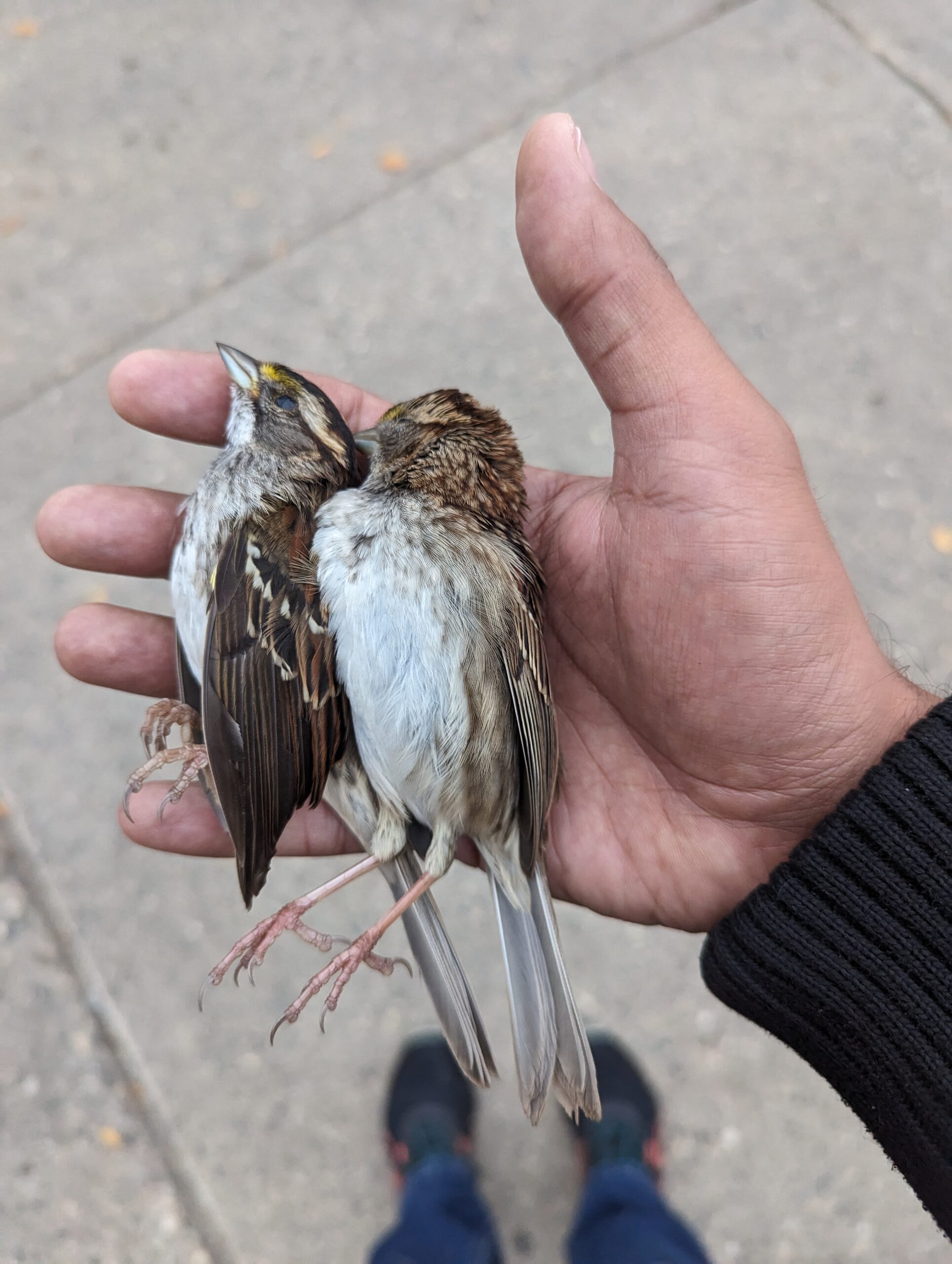In the last couple of years NDSU has expanded its system of skyways and built more new, modern-looking buildings, giving the campus a sleeker and more relevant look. Detracting from this look is the increase of birds that die after colliding with the glass skyways and reflective sides of buildings, an issue that has become serious around the world. In the U.S. alone, more than 800 million birds die from colliding with buildings per year, and Fargo is especially susceptible to this danger.
“North Dakota—and Fargo in particular—is a really amazing spot for migration because we’re right along the Red River and so it’s like the North Central Flyway,” said Britt Heidinger, an associate professor at NDSU whose lab studies how birds cope with environmental challenges like climate change. “That’s why we see the greatest number of deaths during migration.”
For the last two years, several of the lab groups on campus have been collecting dead birds that they find. Anuj Ghimire walks around the buildings that have the highest risk of bird collisions every day looking for birds that have died. “This past fall alone, we had 64 species of birds,” said Ghimire, who is a research specialist at NDSU and a former Ph.D. student from Heidinger’s lab. The species most affected include the golden-crowned kinglet, the dark-eyed junco, Lincoln’s sparrows, and, most commonly, white-throated sparrows.
Several solutions can make windows pose less of a danger to birds: In new buildings, UV glass can be installed, which will reflect UV rays so that birds will see it and avoid colliding with the windows. Cheaper options include hanging cords in front of windows or adding stickers and decals to make the glass more visible. “For example, the West Dining Center has done stickers or something on the windows, which I think has prevented [collisions]. I’ve never found [a dead bird] there…at the RDC as well as the WDC where those decals are,” said Ghimire.
To move forward with collision-proofing windows and skyways, NDSU administration must approve of the project. “We’re not going to be able to retrofit every single window. Our goal is figuring out which windows are the worst windows and identifying that,” said Heidinger. Students can help by advocating for administration to make preventing collisions a priority and asking for donors to give money for the purchase of decals and their installation.
“There are two people at Oklahoma State University who were able to get funding to do some of this retrofitting, and they saw that it made a really huge difference,” said Heidinger. “So what we’re hoping to do is raise awareness of this issue…and that there could be a solution.”
The numbers of birds that die on campus due to collisions are probably even higher than reported, but often crows or squirrels will take the bodies away before they can be collected. If every bird death were to be recorded, it may be enough to get NDSU to do something about the issue. Students who come across dead birds on campus can email anuj.ghimire@ndsu.edu or isaac.rush@ndsu.edu, or even bring the birds to Ghimire’s office in Morrill 206 themselves.
